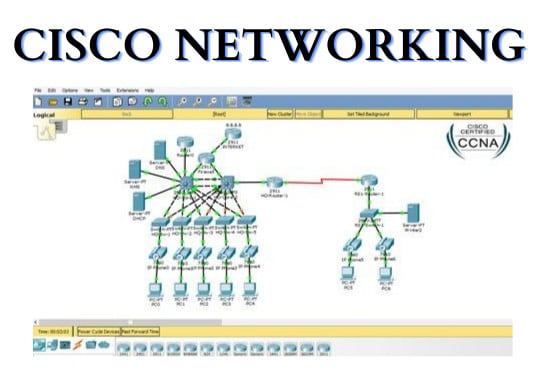


- #Ccna network visualizer setup router via command line how to#
- #Ccna network visualizer setup router via command line full#
- #Ccna network visualizer setup router via command line password#
Note, if neither the enable password command nor the enable secret command is configured, and if there is a line password configured for the console port, the console line password will serve as the enable password for all VTY lines, which includes Telnet, rlogin, and SSH connections. It is also useful if an unauthorized user obtains a copy of your configuration file. Storing the password as a cryptographic hash helps to minimize the risk of password sniffing if the router configuration file is transferred across the network, such as to and from a TFTP server. The enable secret command provides better security by storing the configured enable secret password using a nonreversible cryptographic hash function, compared to the enable password command, which stores the configured password in clear text or in an easily reversible encrypted format. To specify an additional layer of security it’s important to use the enable secret command in global configuration mode as shown above. Router(config)# enable secret strongpassword ! Configure encrypted password ( recommended) Router(config)# enable password somepassword ! Configure non-encrypted password (avoid this type) Now, we will configure the “privileged EXEC” password which is used to enter into “full configuration mode” on the router. Enable Secret Password (encrypted password)Ībove we have configured local accounts and also applied the “local” authentication type to all router lines (VTY, console, aux).Privileged Level Passwords (Privilege EXEC).There are five password types that can be configured on a Cisco Router: Passwords are the first line of defense for securing Cisco Routers. This will help to ensure tracking and auditing in order to know what each user did on the device and when each user connected to the device. Moreover, if you have more than one administrator user connecting to your routers, its better to configure a different personalized username for each administrator. A simple dictionary attack from a hacker will find those easily. For example, words like “admin”, “administrator”, “cisco” etc are not goodusernames. Just a security tip here, for username select something difficult to guess or something that will not be found in dictionary attacks. ! After creating the above local accounts, you then apply the “local” authentication type to the lines Router(config)# username Onlymonitoring privilege 1 secret An0ther!Pass34 Router(config)# username Mynetworkadmin privilege 15 secret $ The second step is to configure your VTY lines (0 to 4) to require a local login access (i.e only a configured user with a valid password can access the router).

#Ccna network visualizer setup router via command line full#
If you don’t specify a privilege level number, it gets the full privilege 15 by default. The first one is to create the username/password and assign it a privilege level (from 1 to 15, with 15 being the most privileged level).

There are two steps involved to configure local usernames. Moreover, configuring local usernames on the device gives you the flexibility to add granularity regarding the levels of management privileges for different users ( although using an external AAA server for authentication and authorization purposes is better compared to local accounts).įor example, you can configure a username on the router with full privileges (privilege level 15) who can configure anything on the router, or you can configure a username with unprivileged access (privilege level 1) who can only see a few things on the router and nothing else. You only need to supply the “privileged EXEC” password (i.e the “ enable” password) in order to gain access to the full configuration mode of the router (read below about the different password levels and types).Įmploying an additional level of authentication (i.e requiring the user to supply an additional username/password credential in addition to the “enable” password) will make the router device more resistant to unauthorized access. The same principles apply also to other Cisco devices such as switches, firewalls etc.īy default, when you access a Cisco router for management purposes (using Console, Telnet or SSH) there is no username/password authentication required.
#Ccna network visualizer setup router via command line how to#
In this article we will discuss how to setup a local username and password on a Cisco router in order to authenticate when connecting to the device for management purposes. Using an external authentication service (such as AAA server, Radius, TACACS etc) or by having local usernames and passwords on the device itself. There are mainly two ways to authenticate to a Cisco router device (and also to other networking devices in general).


 0 kommentar(er)
0 kommentar(er)
